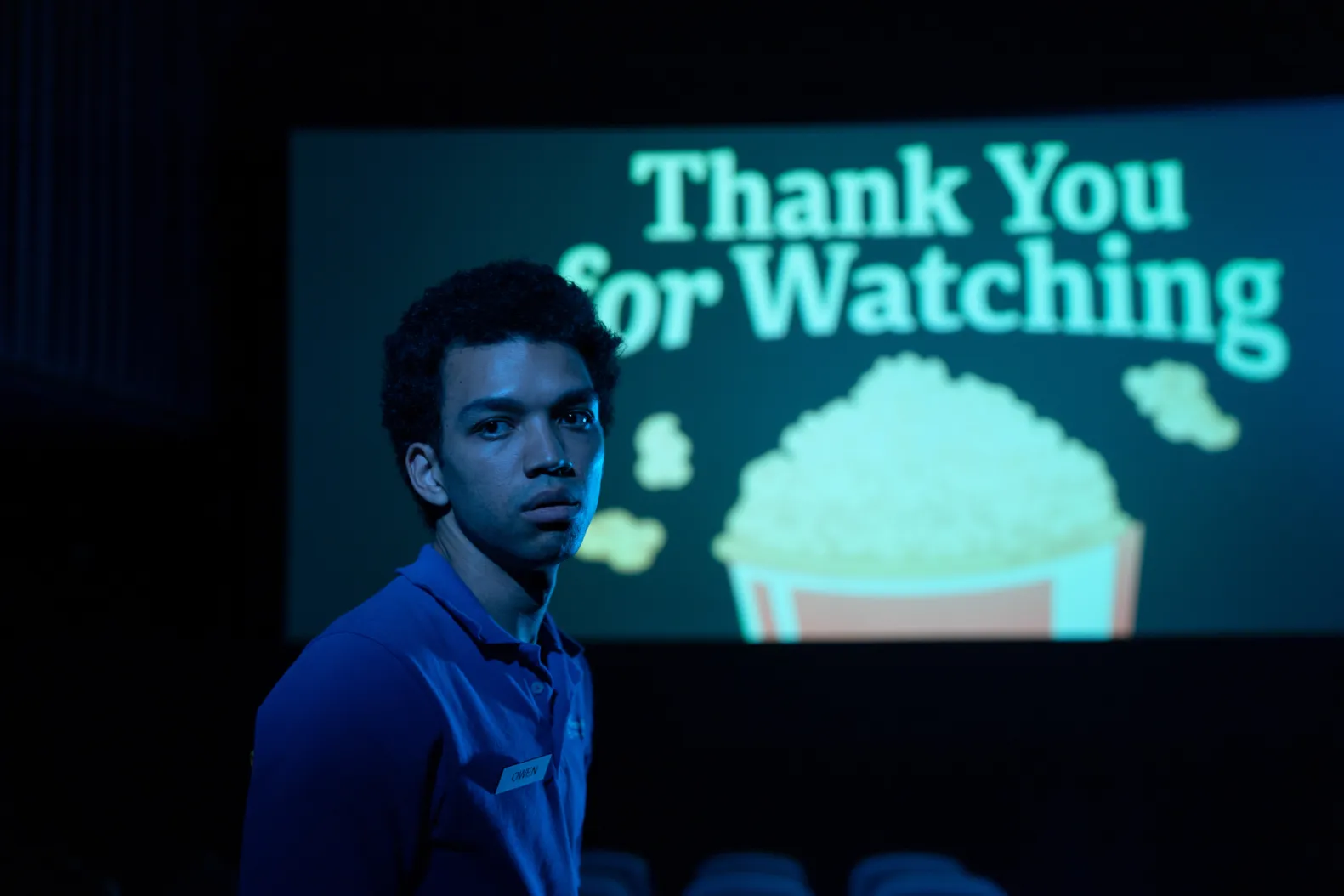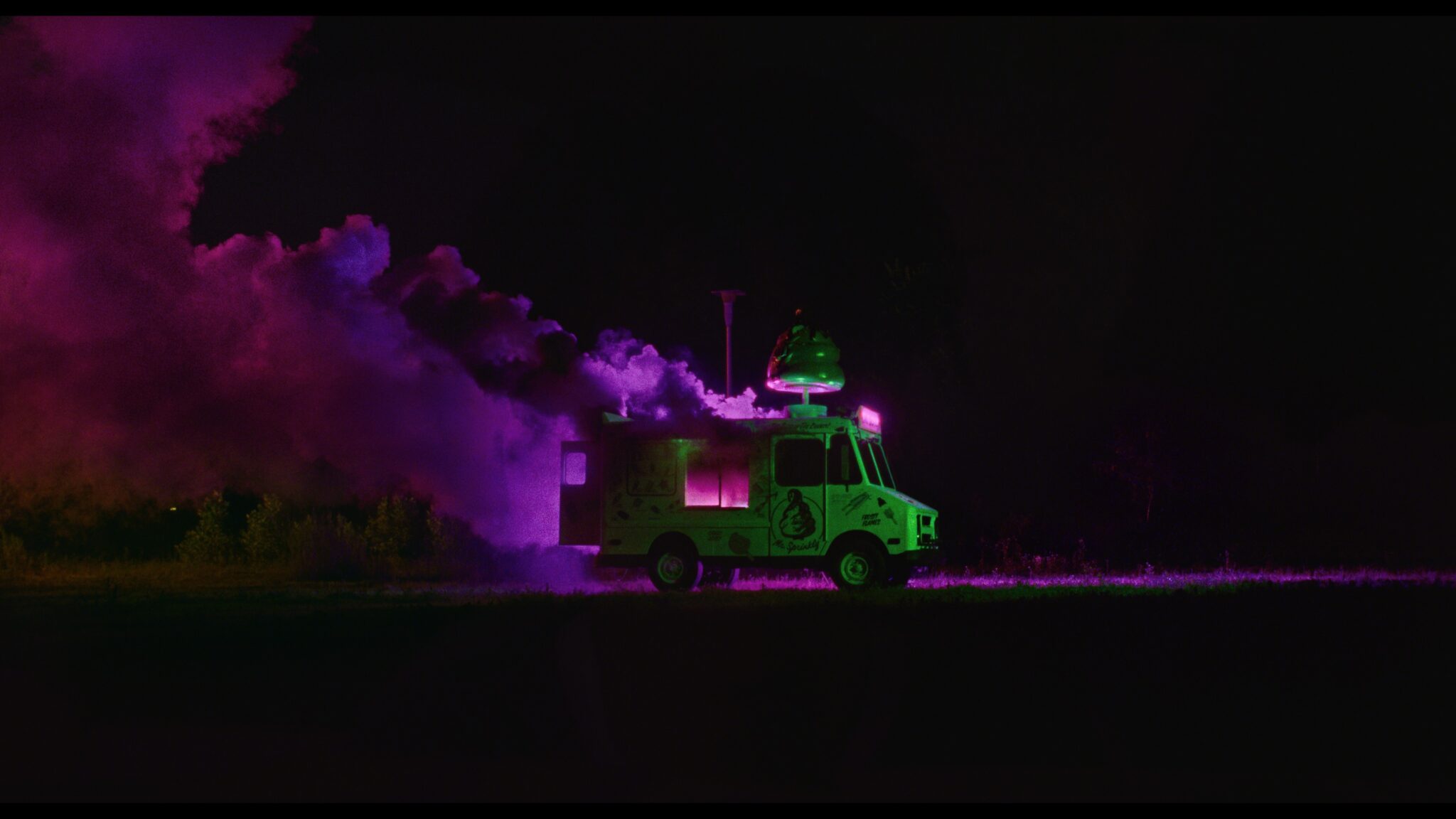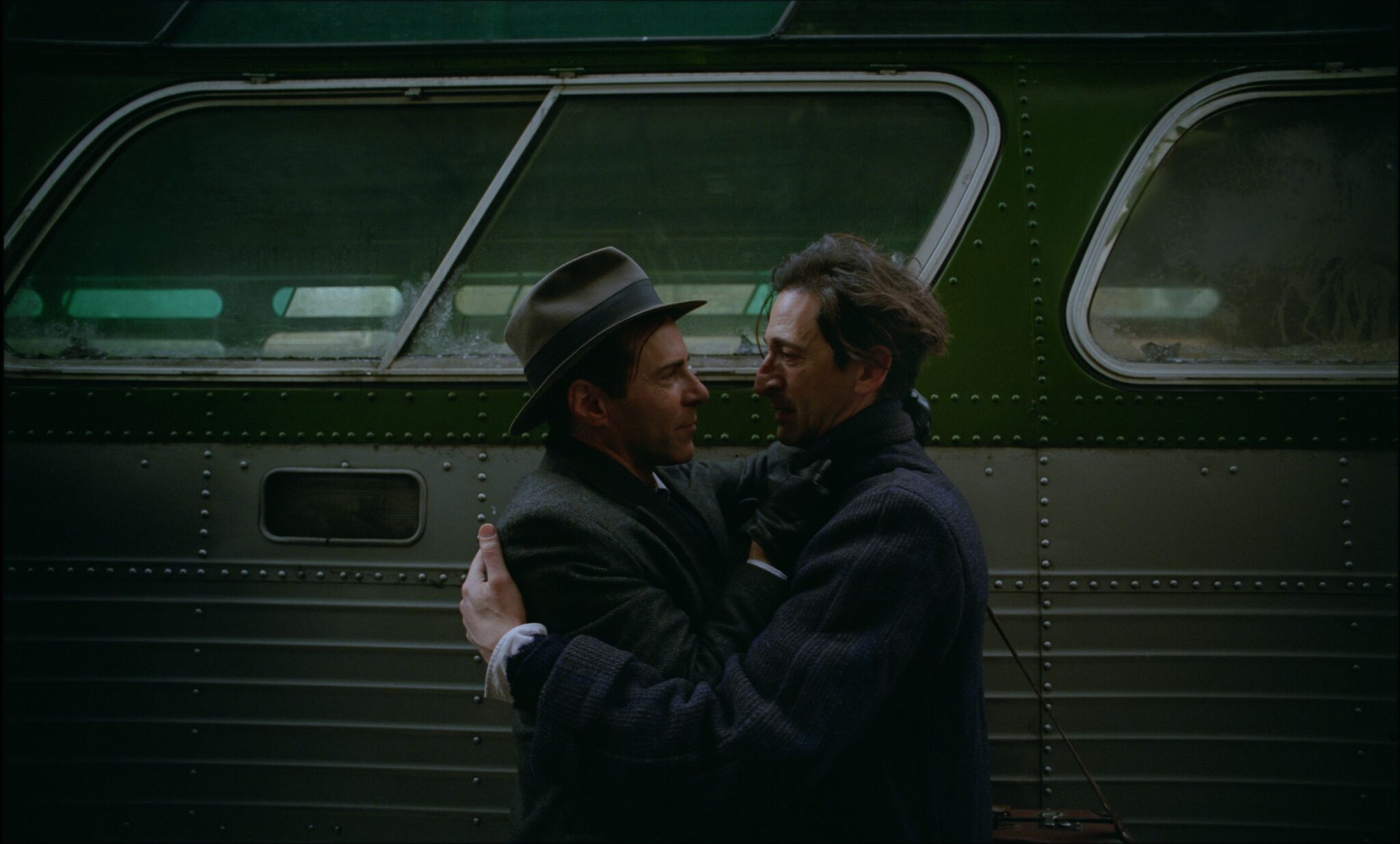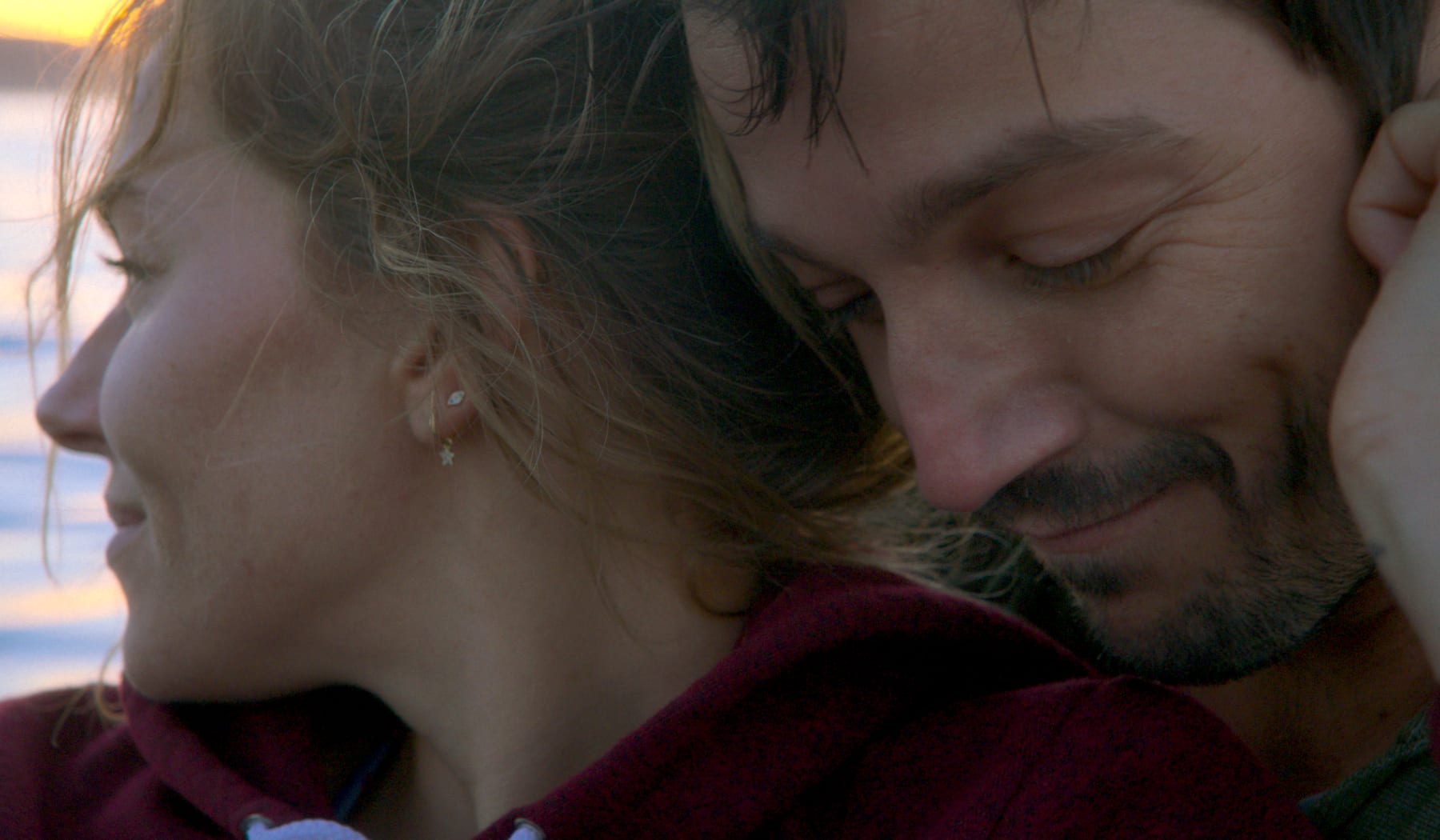The studios simply have no idea what to do with I Saw the TV Glow.
The marketing for TV Glow suggests that this is the latest-hot indie horror film. How anyone managed to put the film in that genre box is beyond me. Quite frankly, this is a film that doesn’t easily fit into any particular category. Instead, I Saw the TV Glow is a unique blend of indie drama, psychological fantasy, and coming-of-age sci-fi.
Written and directed by Jane Schoenbrun, I Saw the TV Glow tells the story of Owen (Justice Smith), a teenager trying to survive suburbia in the late 1990s. Things begin to change, however, when he meets Maddie (Brigette Lundy-Paine), an older youth who helps him discover a mysterious late-night TV show. Entitled The Pink Opaque, the series follows two young women as they attempt to reconcile their psychic abilities with fighting the forces of evil. This need for connection strikes a chord with Maddie and Owen, giving them purpose at a time when they need it most.

One could argue that the true horror of TV Glow is its emphasis on human futility.
Although the film begins in the late 1990s, it doesn’t bring its setting to life through forced pop culture references. There’s no alternative grunge playing over the soundtrack and no N64’s sitting in the background. (Although, particular credit must absolutely be given to the team who created the visuals of the show-within-a-film, The Pink Opaque. The series’ visuals are extraordinarily eerie representations of sci-fi fantasy shows of that era.) Instead, the film wants you to feel the psychology of the 90’s. There’s a genuine sense that life is lacking… something. Owen and Maddie are listless in their pursuits, attempting to find who they are in a world that demands compliance.
In essence, TV Glow is a vibe.
With this in mind, TV Glow becomes a deeply meditative piece. Featuring strong work from its cast (especially Lundy-Paine), this is the sort of story that immerses you into its world. There’s an ecclesial existentialism to TV Glow that makes its neon accents feel empty. The bright hues may offer colour to almost every scene, yet they somehow seem inaccessible to these characters. When we look into their eyes, we see only darkness. This is a world in which they feel that they do not belong and they move like ghosts within it.

As Owen and Maddie search desperately for hope in a time of hopelessness, they cling desperately to the belief that there must be more to this life than what they’ve found. Finding connection through their favourite television program, they are trying to reconcile their place in the world. To them, the Pink Opaque becomes an identity; a window into meaning at a time when everything is meaningless.
But it’s also this apparent nihilism that makes it resonate. Maddie and Owen may feel lost but they’re also searching for more. Questions about sexuality, gender identity and purpose are infused within the film, just as they are within the younger generation today. (In fact, that restlessness also reflects the 90’s ethos as well.) Maddie and Owen aren’t content with the emptiness.
Instead, they’re trying to fill it.
There’s a mixture of frustration and hope that are blended together within I Saw the TV Glow that makes it utterly compelling. Frankly, it’s understandable why marketing would seem lost in attempting to describe the film to the casual viewer. This isn’t a film that keeps anything simple. Even so, while the film is admittedly not for everyone, there’s something captivating about it that keeps the viewer watching. Much like their favourite tv program.
I Saw the TV Glow is available in theatres on Friday, May 17th, 2024





